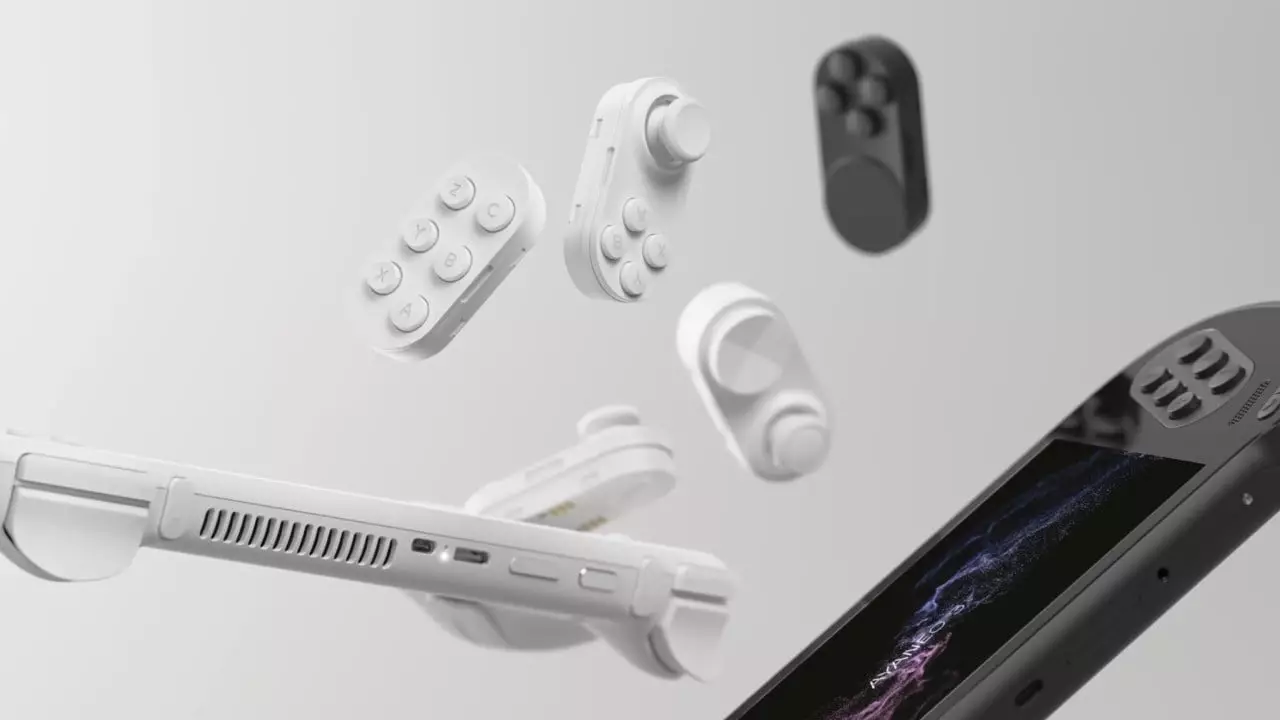As the gaming world buzzes with speculation about the long-awaited successor to the Nintendo Switch, known colloquially as Switch 2, many gamers find themselves at a crossroads of hopes and expectations. While recent leaks hint at the system’s design, which will likely mirror the portable format of its predecessor, gamers are eager for something that truly pushes the boundaries of console gaming. The core concept of a tablet-like unit housing detachable controllers remains appealing. However, amid this anticipation, one brand’s recent innovation has sparked fresh ideas regarding what features could set Switch 2 apart in an increasingly competitive market.
The spotlight recently shone on AYANEO, a Chinese company notable for its creation of high-powered Windows-based handheld gaming devices. With the unveiling of the AYANEO 3, the company introduced an exciting feature called “Magic Modules.” This innovative concept allows players to swap out control modules—an idea that could potentially reshape how players interact with handheld gaming devices. Unlike conventional fixed designs, Magic Modules include customizable arrangements for controllers, enabling users to switch the placement of analogue sticks, add D-pads, or even configure a layout optimized for their favorite genres, such as fighting games.
This development marks a significant step towards player-centric design in gaming hardware. While customization technologies are not new—Turtle Beach’s Stealth Pivot pad once explored similar principles—the application of swappable controls in a handheld device presents fresh opportunities for player engagement. The ability to tailor one’s gaming experience could foster a deeper connection between the player and the game, revamping how personal preferences impact gameplay.
Nintendo has a reputation for introducing innovative ideas, shaping the gaming landscape over the years. While they’ve not yet adopted a modular controller system akin to AYANEO’s Magic Modules, the company has embraced customization to some extent. Third-party manufacturer Hori, for example, produced a unique D-pad Joy-Con for the original Switch, highlighting how outside creators have sought to enhance player experience through personalized accessories. However, the use of customizable systems within the official Nintendo realm has been limited.
As the gaming community considers the future, it raises critical questions about Nintendo’s direction. Will Switch 2 embrace or overlook the potential for modular control options? The industry’s movement towards hyper-customization could leave Nintendo at a disadvantage if their upcoming console doesn’t offer something truly innovative. Gamers are becoming more discerning, demanding experiences that cater to individual tastes, and the modular concept introduced by AYANEO may set a new standard for what players expect in their devices.
The question remains: can Nintendo rise to the occasion and deliver a console that extends beyond mere nostalgia? They have an incredible opportunity to not only replicate the success of the original Switch but to also revolutionize it with a focus on player customization. Integrating features similar to AYANEO’s Magic Modules could provide a fresh avenue of engagement and diversity in gameplay styles, driving increased satisfaction among an expanding user base.
While the anticipation for Switch 2 grows, the gaming community looks for more than just an iteration of its predecessor. The demand lies in innovation—something that entices gamers and keeps them invested in the ever-evolving landscape of gaming. If Nintendo can tap into this desire for customization and personalization, they may very well solidify their standing as trailblazers in the gaming industry once again.


Leave a Reply